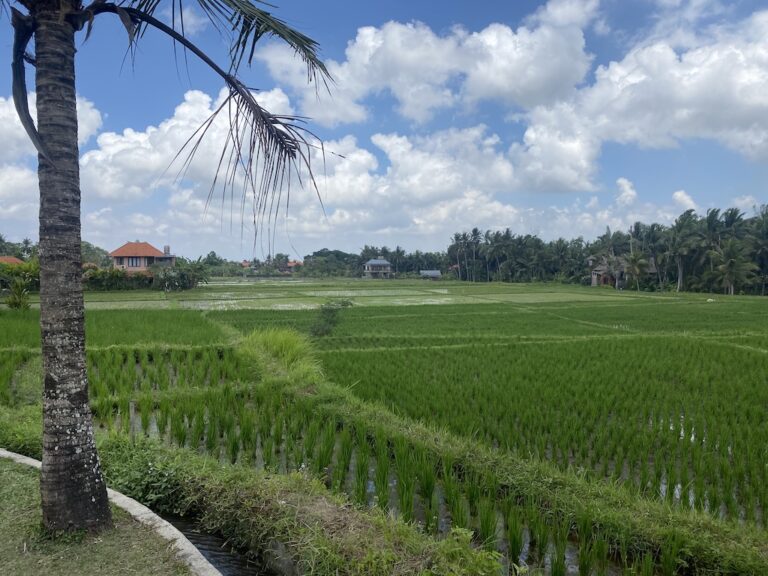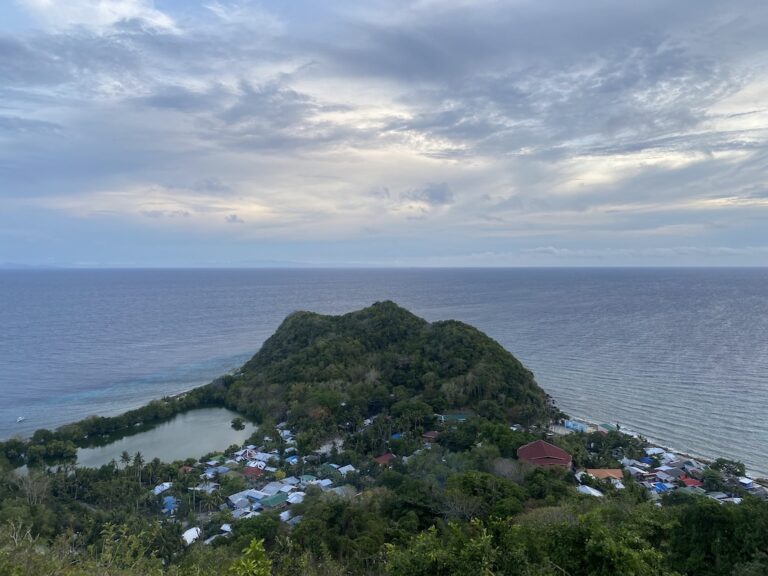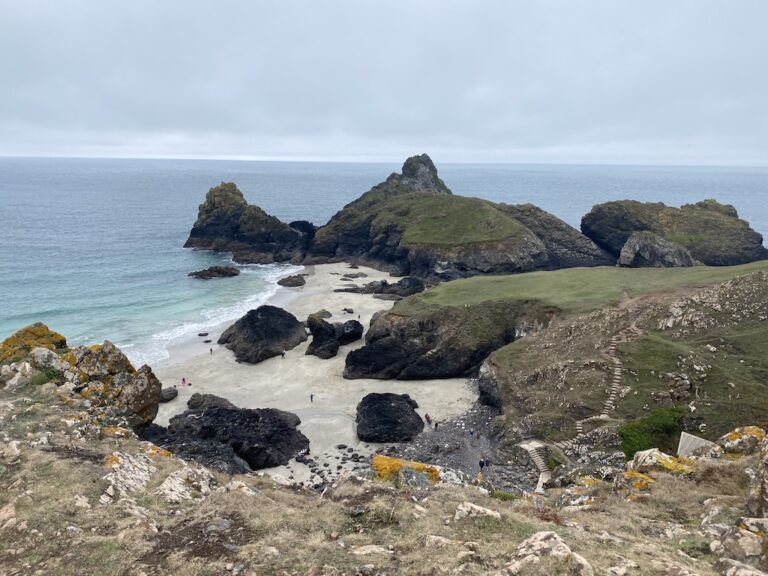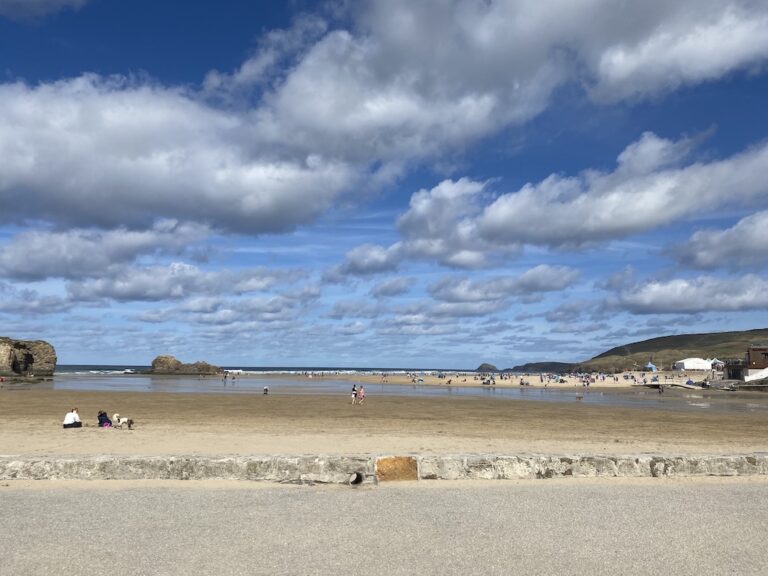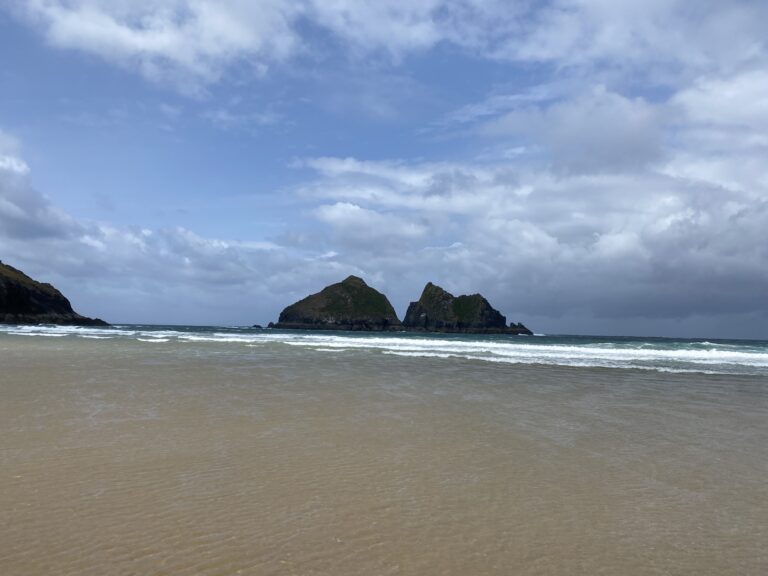All you need to know about visiting Amed, Bali
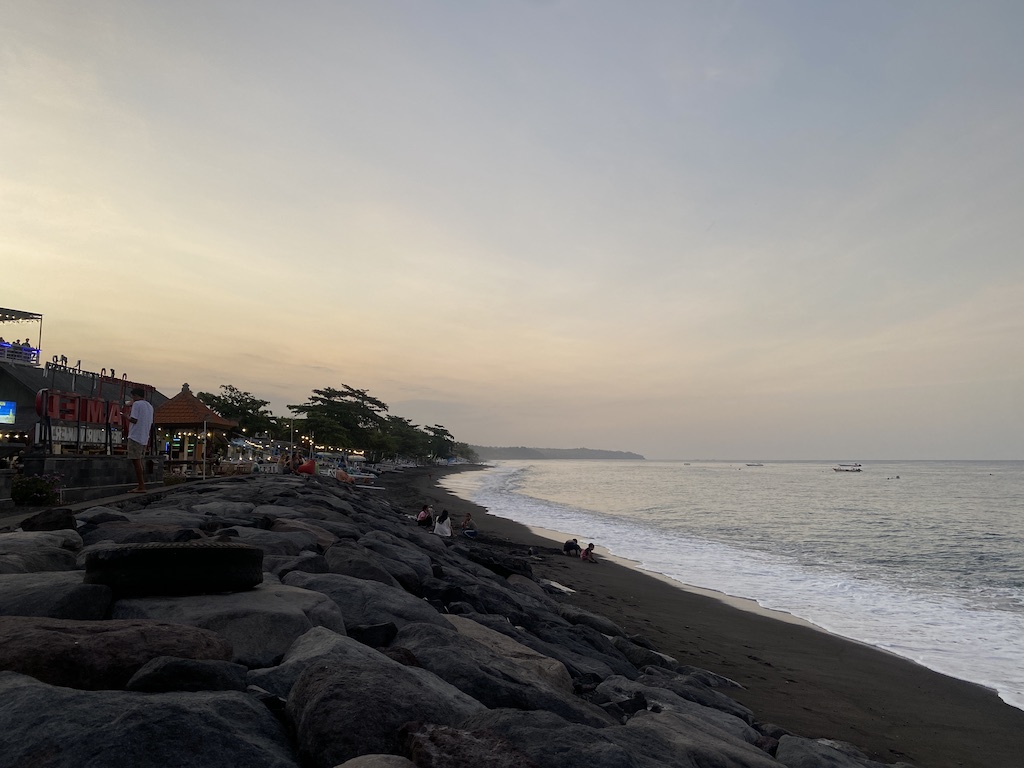
If you’re visiting Bali but want to get away from the tourist hotspots in the south, heading north to Amed is a great option. This fishing village makes for a tranquil departure from the usual hecticness of Bali.
I adored my visit to Amed; it was so calm and refreshing, and was by far my favourite of the places I visited on the island.
Following my visit, I’ve written this guide to Amed. It’s got some more information on the town, as well as my favourite spots to eat at and some ideas on what to do. I hope it helps you plan your own adventure!
Ratings
Accessibility: 4/5 • Safety: 4/5 • Enjoyment: 5/5 • Value: 5/5 • Overall: 4.5/5
About Amed, Bali
Amed is a stretch of coastline in north-east Bali. It’s made up of seven settlements dotted along the coastline, but as they follow one road for miles they blend into one another.
As one of the more well-known stretches of coast in this area of Bali, it’s where to go if you want to explore this area. To me it felt less like a village and more like a smattering of warungs (local restaurants), tourist and local shops, and hotels. It was rarely busy!
Black sand beaches
Amed is positioned on the northern flanks of Mt Agung, Bali’s tallest mountain and an active volcano. Mt Agung is a classic cone-shaped volcano which you can see from the beach, and it really characterises the views you get – not in the least because, on the area we were staying at, the sun sets directly behind it.
With Agung being so close, it’s no surprise that Amed beach has black volcanic sand.
Some people think that black sand beaches are ugly, and for the life of me I can’t understand why! The sand at Amed is intensely dark and quite coarse grained, with plenty of pebbles. It feels clean and looks (in my opinion, at least) gorgeous.
Traditional industries
When I visited Amed, it was clear that tourism is an integral part of the economy here, with many hotels and souvenir shops.
Still, after visiting Ubud and Seminyak, touristy towns in the centre and south of Bali, it felt like tourism had barely touched the place. I can’t tell you how glad I am about this! With higher numbers of visitors I think it would, like any other over touristest area, struggle to retain its charm.
Instead, it feels like fishing is the industry that’s most integral to Amed. Walking down the beach, you can see lined up traditional outrigger fishing boats along the shore, with many out in the sea as well. Wait long enough and you’ll see a boat coming or going.
Amed is also known for its salt, which is made here using evaporation of seawater. You can still see the traditional artisanal processes going on in the heart of Amed, and it’s well worth a visit to see, being so unique to the area!
As my home county, Cheshire, mines salt, I loved seeing how different the sources and processes are in Amed.
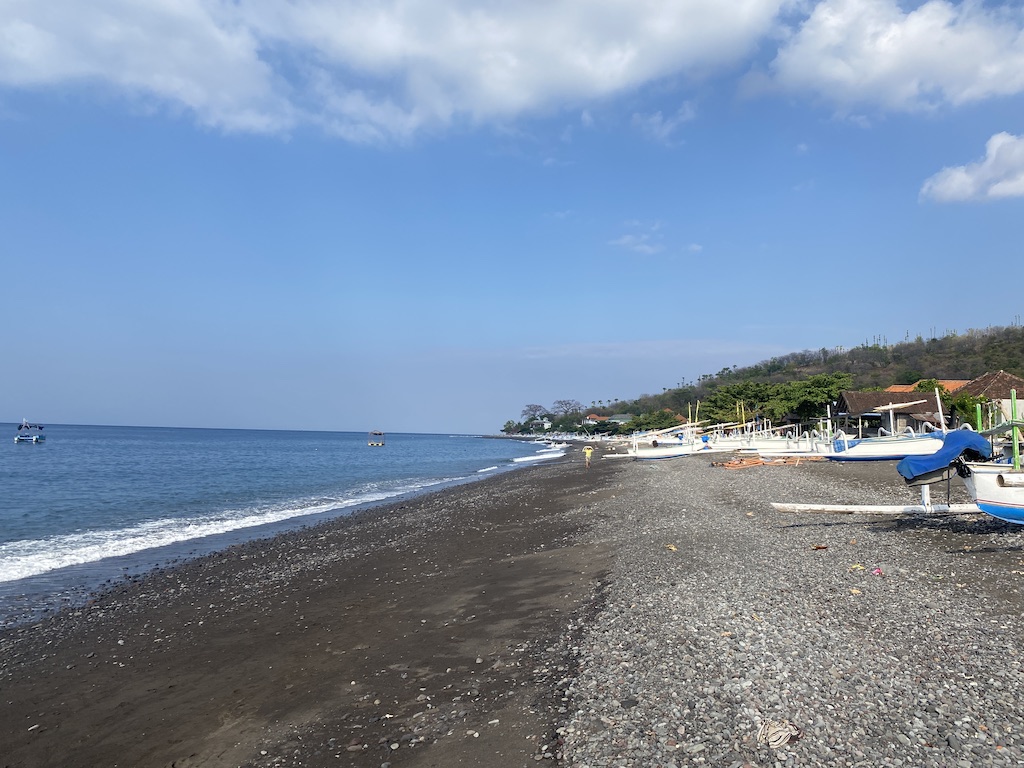
Pretty reefs
On the other hand, what Amed is known most for on an international scale is the diving opportunities. I’ve heard it being called the best place to dive in Bali; it’s certainly high on that list, at least!
At multiple points along Amed beach, you’ll find pretty corals with abundant marine life. Think big shoals of fishes, vibrant corals, and the odd larger animal like turtles.
I did my PADI open water course here and it was a great place to learn. As it’s mostly shore diving, you can quite quickly learn without worrying about getting on and off boats, and with the ease of taking it slowly into the water if you need to. There were also minimal currents at the beginner dive sites we went to.
For seasoned divers, the fact it’s mostly shore diving keeps down prices compared to other areas of Bali.
Amed is also great in that there’s a couple of shipwrecks to explore in the area. We particularly enjoyed diving the Liberty shipwreck in Tulamben. Although, being a fairly recent artificial reef, the corals aren’t as impressive as elsewhere on the beach, it’s fun to swim around the beams and shapes of the former boat, go through holes and see what it’s become in the 60 years since it’s been submerged.
By the way, don’t worry if you’re not a diver! Many of the reefs extend into shallow depths, so you can see them snorkelling. I particularly saw a lot of people snorkelling in Jemeluk, the easternmost village in Amed, where the conditions were gentle and there were many shallow corals.
Time to relax…
The town of Amed is so chill and peaceful. Compare the town to tourist hotspots across Bali, and the difference is striking. I’m so glad it’s less busy, and seems to be more popular with long term travellers and people diving, literally, into the more authentic Bali.
It’s the perfect place to relax for a while on the beach, snorkel or dive if you want, and find yourself in a slower rhythm of life!
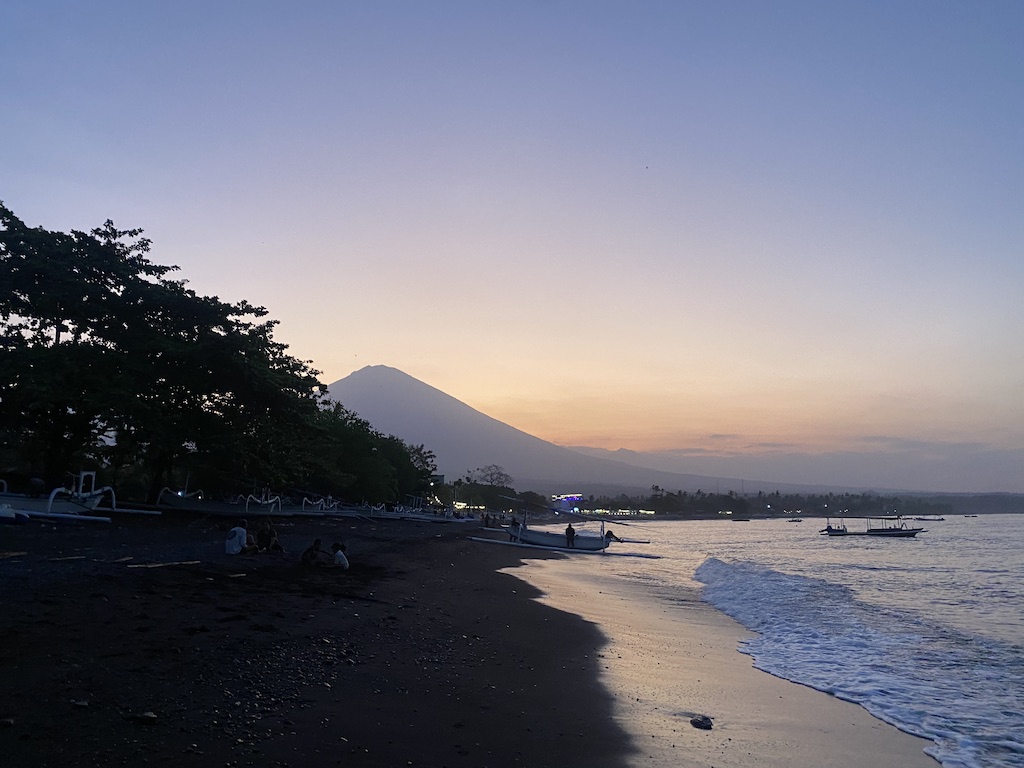
Ratings
As part of this blog, I give every place I visit a rating so that I can easily compare destinations and decide whether they’re worth a visit. Those are the scores you see at the top of the page!
This is how Amed rated:
- Safety: 4/5 – in terms of crime, I felt very safe in Amed. However, I’ve marked it down as there’s no pavement for pedestrians on the road and no lighting either, and the road itself isn’t quite big enough for two cars. This meant I always felt like I was going to be flattened on the road!
- Accessibility: 4/5 – Amed is easy to get to with a private car and driver. However, with the exception of tourist shuttle buses from a few places (such as Ubud), there is no public transport. Also, the most popular activities are diving and snorkelling, which won’t be suitable for everyone.
- Enjoyment: 5/5 – I really liked Amed. It has such a chill atmosphere which put me at ease, and the diving was great. It was by far my favourite place in Bali!
- Value: 5/5 – in general, prices were reasonable in Amed, with lots of inexpensive warungs and accommodation. Also, dive trips are on the cheaper side for Bali.
Overall score: 4.5/5
If you’ve already visited, let me know if you agree with these ratings! Just to note, the ratings are my personal opinion based on my visit, so you might have a completely different experience.
More: how I rank destinations using the Everywhere Ratings system
How to get to Amed
Amed is in the north-east corner of Bali, which is much less touristy and busy than the south. There’s minimal public transport heading to it, save for the odd tourist shuttle bus heading from tourist hotspots like Ubud.
If you’re travelling alone or coming from a major tourist spot, taking a shuttle bus would be a good option. From Ubud these cost around Rp 200k ($13 / £10) per person. I’m not sure how much it would cost if you’re travelling from the south.
Bigger groups, or people travelling from less touristy areas, might want to take a private car. The big benefit of this is that you can stop at other touristy spots along the way, and really make a day out of the journey. However, the associated cost will be much higher.
We took a private car from Ubud, which cost Rp 700k ($45 / £36), which included stop offs at interesting places en-route (in our case, Sibetan Rice Terraces, Tirta Gangga, and a coffee plantation). The private car was super useful as it meant we didn’t have to drive back up to visit Tirta Gangga, which we already wanted to see. It was also nice to have the convenience of being picked up and dropped off at our accommodation. For two of us the added expense was Rp 300k ($20 / £15), compared to two seats on a shuttle bus, and ultimately I think it was worth it!
Driving times are around 2 hour 30 mins from Ubud, and 3 hours from Canggu, Kuta and Seminyak.
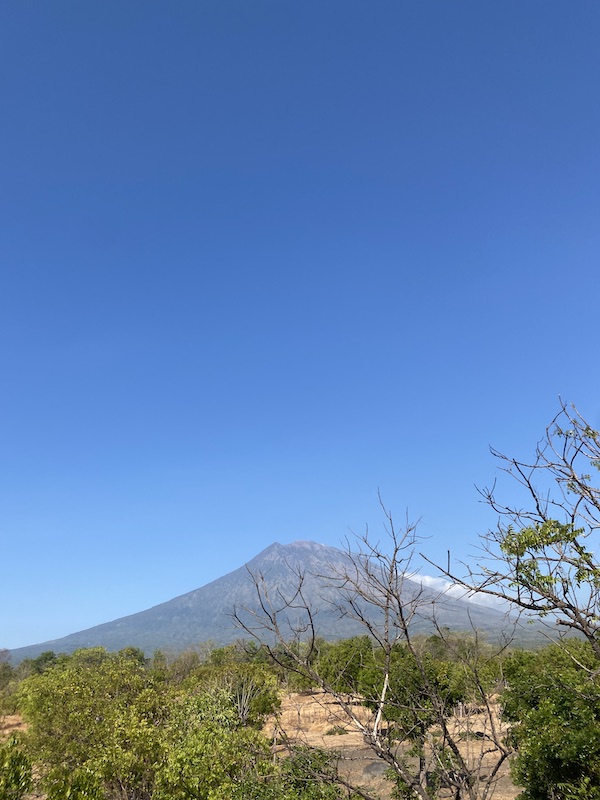
Taking a boat to the Gili islands
In the past, it’s also been possible to take a boat directly to and from Amed from the Gili Islands. This would be a great option if you’re continuing onwards to the Gilis or Lombok, as it’s a bit faffy to get to the ports further south from Amed.
However, whilst we were there, the boats weren’t running. I’m not sure when the ferries will be available again, but hopefully soon! For now, the nearest port to Amed is at Padangbai.
How to get around Amed
As with most of Bali, there is minimal public transport in Amed. Don’t expect to see any buses!
Therefore, if you want to explore the surrounding area, such as Mt Agung or nearby temples, it’s easiest to rent a scooter. These are widely available in Amed, and cost around Rp 60k ($4 / £3) per day.
However, although long, Amed is small, and you probably won’t need to go far from your accommodation to reach the beach or restaurants. Therefore, if you don’t want to explore the surrounding area – for example, if you’re in town specifically to dive – a scooter wouldn’t be necessary, as you can walk to where you need to go.
As we were in Amed to do the PADI Open Water course, our visit fell in the latter category. We could get to the beach, restaurants and shops easily from our hotel and didn’t need to drive anywhere. Besides, many of the nearby attractions are located at altitude, so it isn’t considered safe to visit them after diving.
I should say that we had no doubt Lou could drive a scooter here if needed. The roads were quiet and there wasn’t a lot of traffic – much easier driving conditions than in other areas of Bali!
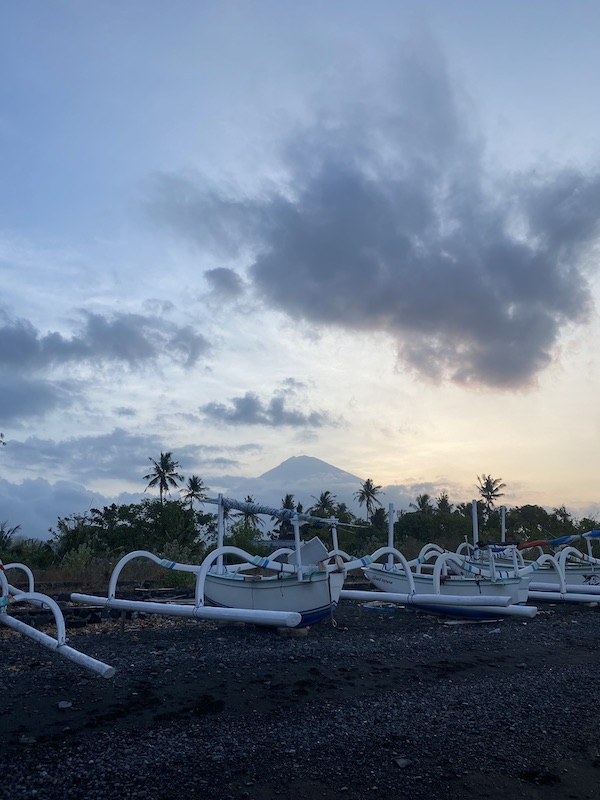
Where to eat in Amed
There are plenty of restaurants and bars in Amed, so don’t worry! You won’t go hungry. We found there to be plenty of reasonably priced options with good food.
We stuck to options within a 15 minute walk of our accommodation along the stretch. Our favourite lunch spot was Warung Makan Manalagi, and we returned three times in all! They do home cooked food at great prices (mains from Rp 20k to 30k / $1 to $2 / £1 to £1.50), and the staff were always super friendly.
Warung Olé is another local restaurant that we ate at and enjoyed (mains from Rp 35k to 40k / $2 to $2.50 / £2). There’s a nice atmosphere with friendly staff. If you eat there during the day, make sure to have a peak at the salt works which are right behind!
Other warungs we went to were Warung Segará, which has a good beachfront option (Rp 40k / $2.50 / £2) – and Zaitun, a Western-Indonesian restaurant with a good atmosphere, albeit small portions (mains Rp 50k / $3 / £2.50).
We also visited Rimba Cafe, which has a super nice atmosphere and is a very chill place to eat at. However, its meals are fairly expensive (Rp 60k to 80k / $4 to $5 / £3 to £4 – and you have to buy fries separately!).
Where to stay
There’s tons of accommodation in Amed. The main road runs parallel to the beach, so most accommodation is minutes from the shore.
You’ll of course find plenty of quaint and more luxury small hotels along the beachfront. However, given how close everything is to the beach I don’t think it was necessary.
As we were doing a dive course, we stayed at Kura Kura Divers Lodge, which is affiliated with who we dived with (Bali Reef Divers). We really liked it and felt very comfortable during our stay there.
What to do
Amed is chill, small and touristy in an understated way. Therefore, coming to Amed to do nothing is, in my opinion, completely valid!
However, there are a lot of things to do in the area, so if you want to do other things there are many options.
I suspect the majority of people visit Amed to dive or snorkel. It’s one of the top places to dive in Bali and is well set-up for such activities, with many dive centres and shore access to the reefs. There’s diverse marine life and some of the most pristine corals in Bali, as well as a couple of well known shipwrecks, such as the Liberty Wreck and Japanese shipwreck. The prevalence of shore diving keeps prices down and makes it accessible to beginners and snorkellers.
We did our dive course at Amed, with Bali Reef Divers. I’d highly recommend them; our instructor was experienced and friendly, and really put us at ease throughout the course!
If you’re less inclined to dive, there are other interesting options nearby. For example, Tirta Gangga, a pretty temple, is only a 30 minute drive away, and at a similar distance you’ll find other temples, coffee plantations, rice terraces and hidden beaches to explore. Hiring a scooter will let you go off the beaten track and visit them all!
Also check out Mt Agung nearby. It’s possible to take a sunrise hike up to the summit, which sounds like a magical experience! An easier option – although still challenging – would be Mt Batur.
Finally, take a visit to the Amed saltworks, and to the Amed Salt Centre, where you can buy the products yourself. They use traditional evaporation methods and it’s super interesting to see!
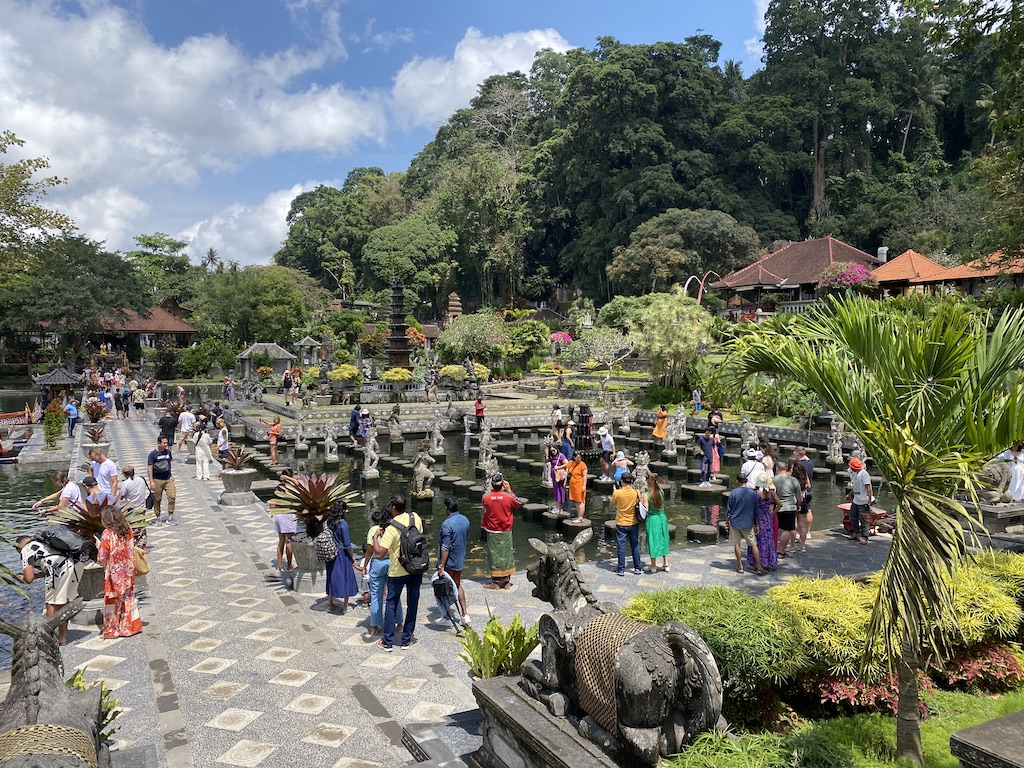
Are there ATMs in Amed?
We only found one ATM in Amed. This is a Mandiri ATM, which is fee-free, and is located in the Indomaret. I also understand there’s an ATM in the Adi shop in Bunutan, but as it was quite a way from our hotel we never tried it out.
We were so excited to find an ATM, which allowed us to pay our dive course fees by cash without added card commission. However, there was often a massive queue for it, and it ran out of money several times during our stay. General consensus: it was useful but not reliable.
Therefore, if you’re heading to Amed, I’d definitely recommend bringing some cash with you. That way, you are covered in any eventuality.
Conclusion
I absolutely loved my stay in Amed and would recommend it to anyone heading to Bali. It’s got such a peaceful vibe, you will feel so removed from the other touristic sites on the island!
Do you have any questions about Amed? Let me know in the comments!
Planning a longer trip to Bali? Check out my guides to Ubud, Gili Trawangan and Gili Air!

